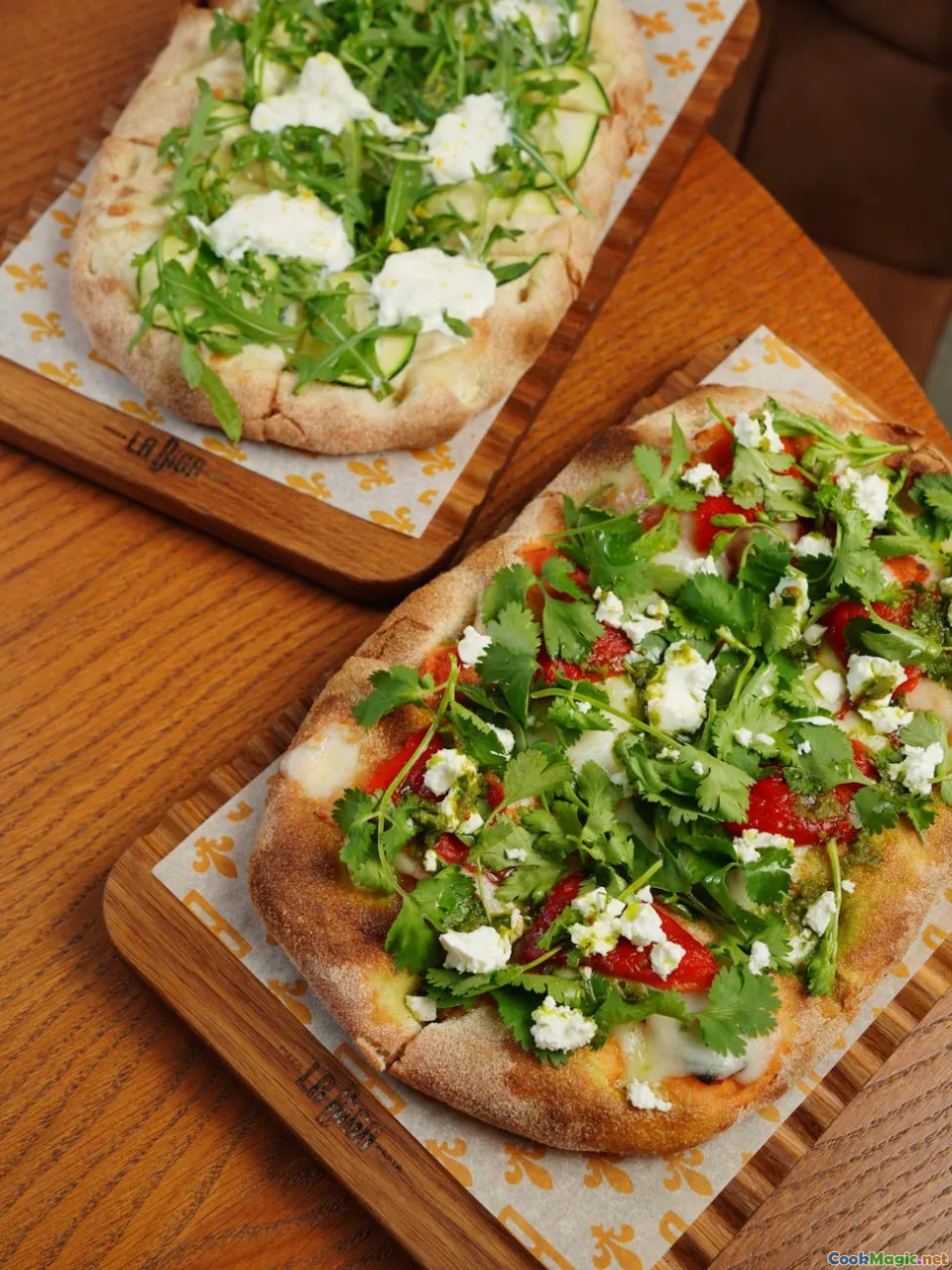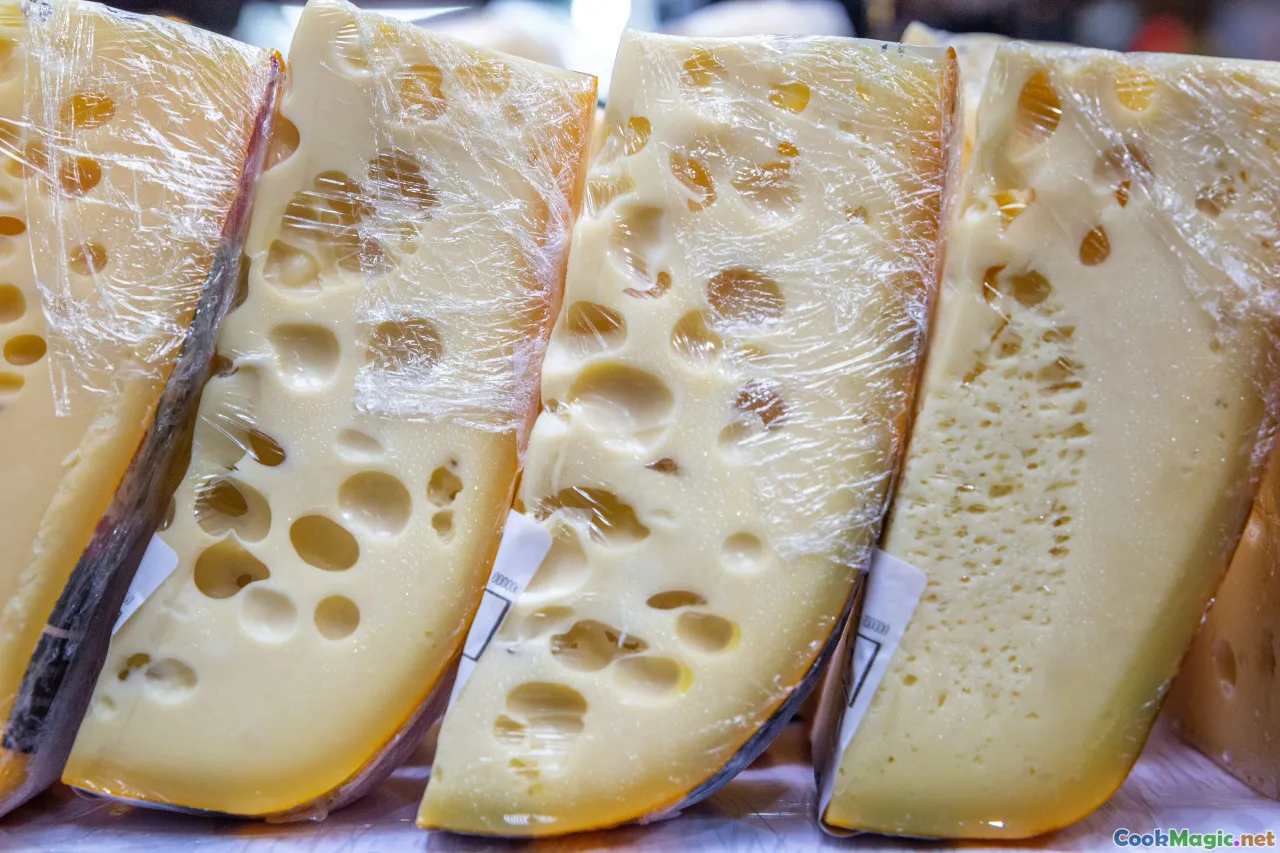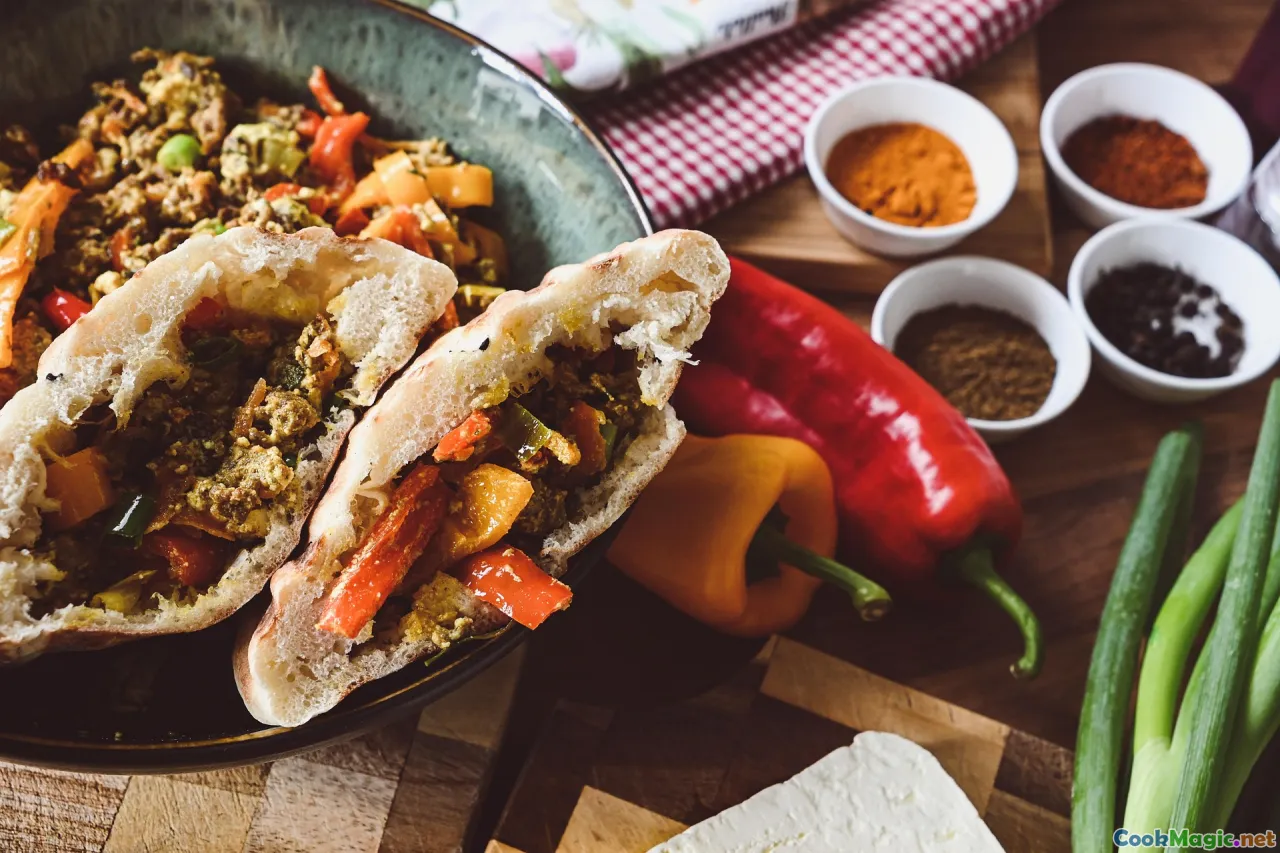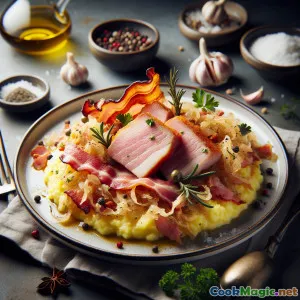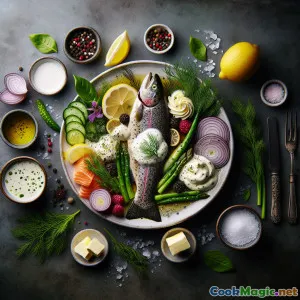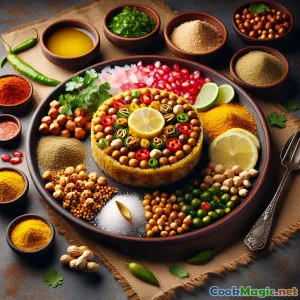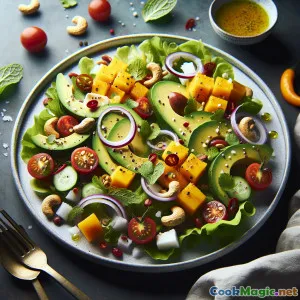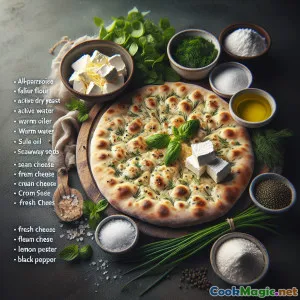
Rustikales Bela Krajina Fladenbrot mit Kräuterquark
(Rustic Bela Krajina Flatbread with Herbed Cheese)
(0 Bewertungen)0
795
Juli 17, 2025
Problem melden
Zutaten
-
250 grams Weißmehl
(Ungebleicht für eine rustikale Textur)
-
1 packet (7g) Aktive Trockenhefe
(Instanthefe funktioniert auch.)
-
150 ml Warmes Wasser
(Ca. 40 °C/105 °F)
-
1 tsp Salz
(Zusätzliches Extra für die Garnierung)
-
1 tsp Zucker
(Die Hefe aktivieren)
-
2 tbsp Olivenöl
(Geteilt, geeignet für Teig und Bestreichen)
-
1 tbsp Kümmelsamen
(Traditionelles Bela-Krajina-Topping)
-
1 tsp Meersalzflocken
(Zum Bestreuen)
-
150 grams Frischkäse
(Vollfettbutter, weich)
-
100 grams Ziegenkäse
(weicher, frischer Ziegenkäse)
-
2 tbsp Frischer Schnittlauch
(Fein gehackt)
-
1 tbsp Frischer Dill
(Fein gehackt)
-
0.5 tsp Zitronenschale
(Optional, für einen Hauch von Zitrus.)
-
0.5 tsp Schwarzer Pfeffer
(Frisch geknackt)
(Ungebleicht für eine rustikale Textur)
(Instanthefe funktioniert auch.)
(Ca. 40 °C/105 °F)
(Zusätzliches Extra für die Garnierung)
(Die Hefe aktivieren)
(Geteilt, geeignet für Teig und Bestreichen)
(Traditionelles Bela-Krajina-Topping)
(Zum Bestreuen)
(Vollfettbutter, weich)
(weicher, frischer Ziegenkäse)
(Fein gehackt)
(Fein gehackt)
(Optional, für einen Hauch von Zitrus.)
(Frisch geknackt)
Nährwerte
- Portionen: 4
- Portionsgröße: 2 Spaltenstücke (ca. 140 g)
- Calories: 410 kcal
- Carbohydrates: 49 g
- Protein: 11 g
- Fat: 17 g
- Fiber: 3 g
- Sugar: 2 g
- Sodium: 640 mg
- Cholesterol: 30 mg
- Calcium: 155 mg
- Iron: 2.8 mg
Anweisungen
-
1 - Hefe aktivieren:
In einer kleinen Schüssel warmes Wasser, Zucker und Hefe mischen. Vorsichtig umrühren und stehen lassen, bis es schäumt, ca. 5–8 Minuten.
-
2 - Teig Mischen:
In einer großen Schüssel Mehl und Salz vermischen. Eine Vertiefung bilden, die Hefemischung und 1 EL Olivenöl hinzufügen. Umrühren, bis sich ein grober Teig bildet.
-
3 - Teig kneten:
Den Teig auf eine bemehlte Arbeitsfläche geben. 6–8 Minuten kneten, bis er weich und elastisch ist. Falls er klebrig ist, etwas Mehl hinzufügen.
-
4 - Erste Gehzeit:
Gib den Teig in eine mit Olivenöl eingefettete Schüssel. Decke ihn mit einem Küchentuch ab. Lasse ihn an einem warmen Ort 30 Minuten gehen oder bis er fast doppelt so groß ist.
-
5 - Ofen vorheizen:
In den letzten 10 Minuten der Gare heizen Sie den Ofen vor (mit einem Backstein oder einem umgedrehten Backblech im Inneren) auf 230°C (450°F).
-
6 - Forme das Fladenbrot:
Lege den aufgegangenen Teig auf eine bemehlte Arbeitsfläche; forme eine rustikale runde Teigscheibe von ca. 2 cm Dicke. Drücke großzügig Mulden mit den Fingerspitzen hinein.
-
7 - Belegen und backen:
Bestreichen Sie den Teig mit dem restlichen Olivenöl. Bestreuen Sie ihn mit Kümmelsamen und Meersalzflocken. Backen Sie ihn 15–20 Minuten, bis er goldbraun und knusprig ist.
-
8 - Käse mit Kräutern:
Vermischen Sie Frischkäse, Ziegenkäse (falls verwendet), Schnittlauch, Dill, Zitronenschale und schwarzen Pfeffer. In eine kleine Schüssel geben und rühren, bis es cremig ist.
-
9 - Servieren:
Lass das Fladenbrot leicht abkühlen. Schneide es in Spalten und serviere es mit einem großzügigen Löffel Kräuterfrischkäse. Garniere nach Belieben mit weiteren Kräutern.
In einer kleinen Schüssel warmes Wasser, Zucker und Hefe mischen. Vorsichtig umrühren und stehen lassen, bis es schäumt, ca. 5–8 Minuten.
In einer großen Schüssel Mehl und Salz vermischen. Eine Vertiefung bilden, die Hefemischung und 1 EL Olivenöl hinzufügen. Umrühren, bis sich ein grober Teig bildet.
Den Teig auf eine bemehlte Arbeitsfläche geben. 6–8 Minuten kneten, bis er weich und elastisch ist. Falls er klebrig ist, etwas Mehl hinzufügen.
Gib den Teig in eine mit Olivenöl eingefettete Schüssel. Decke ihn mit einem Küchentuch ab. Lasse ihn an einem warmen Ort 30 Minuten gehen oder bis er fast doppelt so groß ist.
In den letzten 10 Minuten der Gare heizen Sie den Ofen vor (mit einem Backstein oder einem umgedrehten Backblech im Inneren) auf 230°C (450°F).
Lege den aufgegangenen Teig auf eine bemehlte Arbeitsfläche; forme eine rustikale runde Teigscheibe von ca. 2 cm Dicke. Drücke großzügig Mulden mit den Fingerspitzen hinein.
Bestreichen Sie den Teig mit dem restlichen Olivenöl. Bestreuen Sie ihn mit Kümmelsamen und Meersalzflocken. Backen Sie ihn 15–20 Minuten, bis er goldbraun und knusprig ist.
Vermischen Sie Frischkäse, Ziegenkäse (falls verwendet), Schnittlauch, Dill, Zitronenschale und schwarzen Pfeffer. In eine kleine Schüssel geben und rühren, bis es cremig ist.
Lass das Fladenbrot leicht abkühlen. Schneide es in Spalten und serviere es mit einem großzügigen Löffel Kräuterfrischkäse. Garniere nach Belieben mit weiteren Kräutern.
Mehr über: Rustikales Bela Krajina Fladenbrot mit Kräuterquark
Bela Krajina Flatbread with Herbed Cheese
History and Background
Bela Krajina, a tranquil region of forested hills and white birch in southeast Slovenia, is famous for its rich folklore, blossoming traditions, and—most deliciously—its signature flatbread known as "Belokranjska pogača". This is not an ordinary bread; rather, it holds great cultural weight at gatherings, commemorations, and as a sign of open-handed hospitality. Pogača is comparable neither to thick focaccia nor slim pizza, but elegantly lands somewhere in between leaning towards the rustic. It's dimpled by hand, generously brushed with good olive oil, and showered in caraway seeds and sea salt flakes for aromatic crunch.
Uniqueness and Creative Twist
Traditional Bela Krajina flatbread is beloved for its rich flour flavor, fluffy interior, and seed-speckled crust. My creative version maintains these hallmarks but elevates the experience with a spread of herbed cheese—soft, creamy, flecked with chives, dill, and a whisper of lemon zest. The gentle bite and tang of goat cheese (optionally blended with cream cheese) makes for a lively, modern topping that nods both to eastern European cheese spreads and Mediterranean freshness.
Tips, Notes, & Substitutions
- If you prefer, substitute Greek yogurt for cream cheese for a tarter, lighter spread.
- Add your favorite fresh garden herbs—parsley or tarragon work beautifully—if chives or dill are hard to locate.
- The dough can be prepared up to 24 hours in advance; refrigerate after the first rise, and bring to room temp before baking.
- Traditional pogača toppings are simple, but feel free to experiment—with sesame seeds, poppy, or smoked sea salt, for extra texture.
- For easy entertaining, prepare several small flatbreads instead of a single large one; each will rise fast on the baking stone for extra crisp bottoms.
- Blow guests away by grilling sliced, cooled wedges until faintly charred, then piling with thick spirals of cheese and watercress.
Cultural Significance
In Slovenia, bread is intertwined with life’s rituals—it is broken at births, given at weddings, and honored at harvests. "Pogača" itself draws its name from ancient panis focacius—bread baked on the focus, or open hearth. Flatbreads like this became the cherished centerpiece for festivals such as Pentecost, shepherd gatherings, and community fairs. Caraway, regularly intermixed with wild or garden herbs, echoes the earth-rich abundance of the region and carries with it the intention that every strand of dough or sprig of green welcomes friends as much as family.
Why This Recipe Works
Baking at a high temp with a preheated baking stone or inverted tray mimics the effect of a brick oven, resulting in the iconic dappled bottom and pillowy open crumb. The dough's minimally processed simplicity spotlights the importance of ingredient quality: good Slovenian olive oil, flaky salt, the freshest possible herbs, and high-hydration flour for structure. Each bite combines the salty, warmed-toasty bread with the tang of creamy herbed cheese—the best of Slovenian rustic tradition and a delicate taste adventure via the spoon of fresh dairy.
Final Thoughts
Bela Krajina Flatbread with Herbed Cheese offers a window to the heart of Slovenia, inviting all, no matter their origin, to participate in the ancient magic of breaking bread. Crisp yet tender, savory with a delicate herbal lilt, it encourages the pleasures of casual company.
Pair with crisp white wine or homemade elderflower cordial, and let your moments stretching, dimpling, and gathering around the warm bread speak to a timeless hospitality. At its core, this recipe respects generations of bakers while gently unfolding the next chapter—making it your own. Enjoy warm from the oven, savored with friends or quietly amid a late afternoon, watching the summer light.

